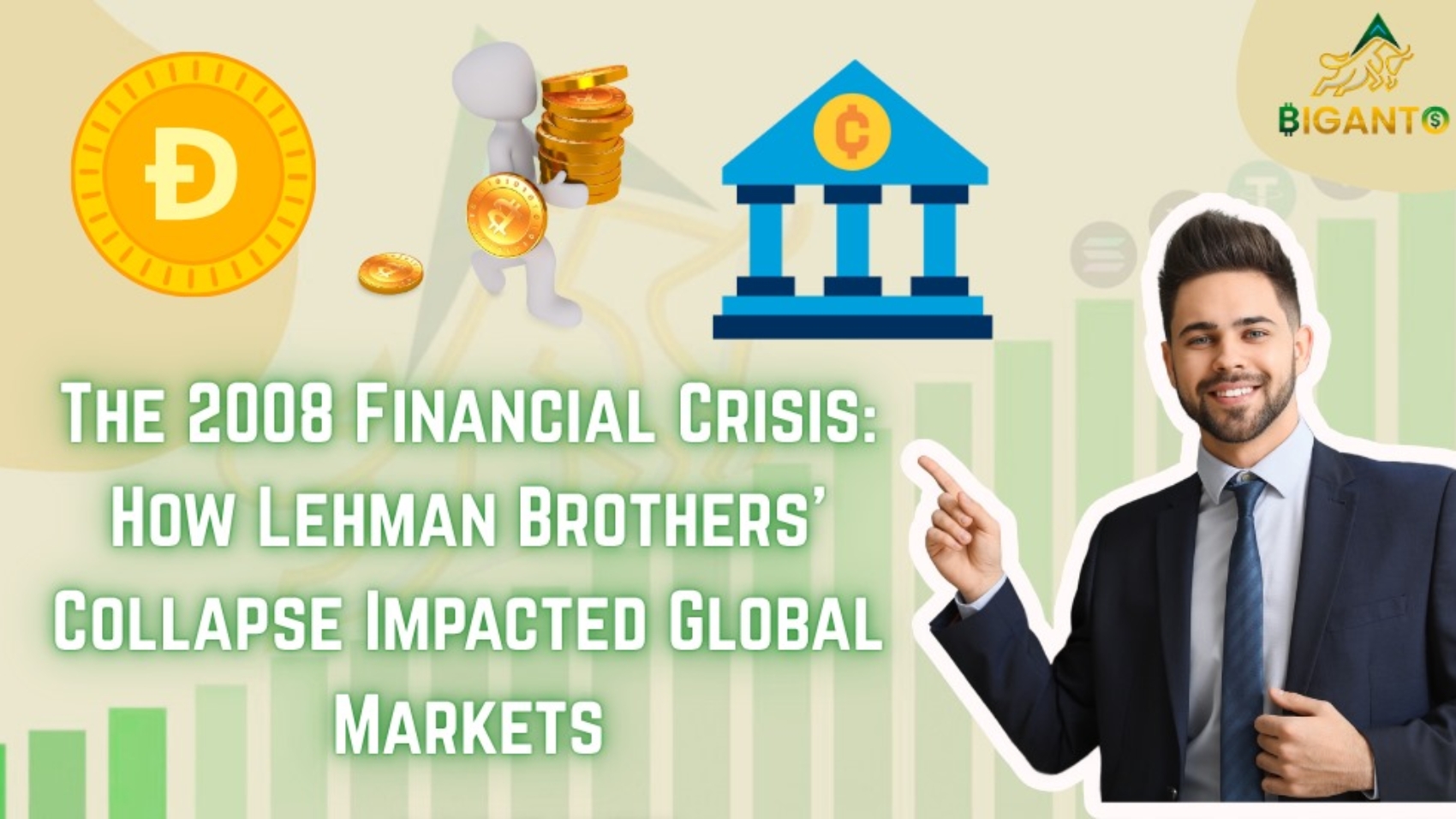Introduction
The 2008 Financial Crisis stands as one of the most severe economic downturns since the Great Depression, fundamentally reshaping the global financial landscape and prompting sweeping changes in economic policies and regulatory frameworks across nations. At the heart of this crisis was the unexpected and catastrophic collapse of Lehman Brothers—a 158-year-old investment bank—on September 15, 2008. Far from being a mere casualty of market forces, Lehman’s failure acted as a powerful accelerant, amplifying the crisis and sending shockwaves through the interconnected arteries of global finance. Its bankruptcy triggered panic in credit markets, halted interbank lending, and shattered investor confidence on a global scale.
This research will explore the underlying causes of Lehman Brothers’ collapse, with a focus on its internal practices within the U.S. financial system—including its exposure to subprime mortgage-backed securities, unsustainable leverage ratios, and failures in risk management. At the same time, it will analyze how the firm’s downfall contributed to the broader financial crisis and initiated a domino effect across global economies.
By investigating the crisis from both a domestic and international perspective, the study aims to uncover the vulnerabilities of an increasingly interconnected financial world. In addition, this case study will present a set of actionable insights, investment strategies, and policy recommendations that can be drawn from the crisis. These findings are not only meant to serve as historical analysis but also as a practical guide for navigating similar financial shocks in the future.
Background to the Crisis: A Fragile Financial Foundation
1. Subprime Lending Boom
The roots of the 2008 crisis lie in the early 2000s, when banks began issuing large volumes of subprime mortgages—home loans offered to borrowers with weak credit. These loans often required minimal documentation and came with low introductory interest rates that would later rise sharply. Lenders were driven by the search for higher returns in a low-interest-rate environment, even as borrower risk increased.
2. Securitization and Misplaced Confidence
To spread and monetize this growing mortgage debt, banks like Lehman Brothers packaged these loans into Mortgage-Backed Securities (MBS) and Collateralized Debt Obligations (CDOs). These complex financial products were sold globally to investors. Rating agencies, often influenced by the banks themselves, gave overly optimistic ratings to these securities, masking the true risk involved.
This created the illusion of safety and allowed risky assets to flood both U.S. and international markets, setting the stage for systemic failure.
3. The Housing Bubble and Burst
Fueled by easy credit and rising demand, U.S. housing prices soared, creating a bubble based on the belief that home values would keep climbing. But as interest rates rose and adjustable mortgage rates reset, many subprime borrowers began defaulting. Home prices fell, leading to mass foreclosures and massive losses for institutions tied to mortgage-backed assets.
4. The Unraveling Begins
As mortgage defaults climbed, the value of MBS and CDOs collapsed. Banks and financial firms faced huge losses. Lehman Brothers, heavily exposed to real estate and operating with high leverage, could not survive the shock. Its bankruptcy in September 2008 triggered a global credit freeze and full-blown financial panic.
The Massive Error: The Cause of Lehman Brothers’ Demise
Lehman Brothers’ collapse was the product of overconfidence, excessive leverage, and a fatal misreading of the housing market. The main factor was excessive exposure to subprime mortgage assets, which by 2007 were already exhibiting indications of fragility. Lehman doubled down on its real estate holdings, betting on a housing rebound that never materialized, rather than lowering risk.
According to reports, the company’s leverage ratio was as high as 30:1, which meant that even a slight decline in asset values might wipe out its equity. Lehman employed aggressive accounting strategies, like Repo 105 transactions, to temporarily remove liabilities off its balance sheet and provide investors and regulators a more positive impression of its financial health in spite of growing losses.
Lehman Brothers’ Collapse Impact Global Markets
1. Meltdown of the World Stock Market
Global stock markets responded sharply and immediately to Lehman Brothers’ demise. The Dow Jones Industrial Average fell more than 500 points on the day of the bankruptcy filing, making it one of the biggest one-day declines since 9/11. Investors scrambled to sell off riskier assets as markets in Asia and Europe followed suit. The dread and uncertainty spread quickly, wiping out trillions of dollars in market value in a matter of days. Although the banking industry was first the most severely affected, the contagion quickly extended to almost every industry in the world economy.
2. International Trade and the Recession
Global demand significantly decreased as major economies entered a recession. Countries that depended heavily on exports, particularly those in Asia and Latin America, experienced a decline in both orders and revenues. International trade dropped, which resulted in plant closures, job losses, and declining GDPs worldwide. From a banking failure, the 2008 financial crisis swiftly developed into the worst global recession since World War II, resulting in long-term structural damage and widespread economic hardship.
3. Instability in Currency and Capital Flight
Foreign investors quickly withdrew their money from emerging markets, causing significant capital outflows. The currency of nations like Brazil, South Africa, and India fell sharply as a result of this flight for safety. In order to stabilize their currencies and preserve investor confidence, the central banks of these countries were compelled to utilize their foreign exchange reserves. Many developing economies saw slower growth as a result of abrupt investor withdrawals and tighter global lending conditions.
4. The paralysis of the credit market
Credit markets worldwide froze as confidence dwindled. Uncertain of who might be in possession of toxic assets or experiencing liquidity problems, banks ceased lending to one another. The sharp increase in interbank loan rates, like LIBOR, was indicative of the widespread mistrust. In addition to banks, enterprises and small businesses that depended on consistent access to credit also saw a drying up of liquidity. Daily economic operations were hampered by this abrupt stop in credit flow, which further exacerbated the worldwide financial panic.
5. Financial Institutions Are Affected by the Domino Effect
The collapse of Lehman revealed weaknesses in other significant financial organizations. The insurance behemoth AIG needed a huge government bailout to stay afloat, while Merrill Lynch was forced into an emergency sale to Bank of America. Banks in Europe that needed immediate capital infusions were Hypo Real Estate, Dexia, and the Royal Bank of Scotland (RBS). Governments had to intervene with previously unheard-of measures to stop the banking system from collapsing further.
Rebuilding Trust in the Global Financial System through Regulatory Changes and Lessons Learned
Lehman Brothers’ demise and the global financial crisis of 2008 acted as a wake-up call, leading to a thorough review of corporate governance, systemic risk management, and financial regulation. The acknowledgement of organizations that were thought to be “too big to fail” was among the most significant lessons learned. These are financial organizations whose failure could jeopardize the economy as a whole, compelling governments to step in and provide bailouts, frequently at the expense of taxpayers. This sparked grave worries about moral hazard and the requirement for more stringent regulation.
In response, the Dodd-Frank Wall Street Reform and Consumer Protection Act of 2010 was passed in the US, implementing extensive financial regulations. The purpose of this law was to improve responsibility in the financial industry and lower systemic risk. The establishment of the Financial Stability Oversight Council (FSOC), which was entrusted with detecting and keeping an eye on financial system vulnerabilities, was one of its main features. The creation of the Consumer Financial Protection Bureau (CFPB), which was intended to protect consumers from deceptive financial practices, was another significant event.
Additionally, banks were forced to keep additional reserves and lessen their reliance on short-term borrowing as a result of Dodd-Frank’s tougher capital and liquidity requirements. The “Volcker Rule,” which restricted proprietary trading and speculative investments by commercial banks, was put into effect, and the mostly unregulated derivatives market was placed under federal supervision.
The crisis sparked a wave of international regulatory coordination outside of the United States. The Financial Stability Board (FSB) and the G20 have emerged as key forums for coordinating international policy and enhancing financial sector transparency. To make sure the financial system is more resilient in times of crisis, regulatory bodies started regularly testing large banks’ stress tolerance in order to determine how well they could handle significant economic shocks.
All things considered, in order to avoid another catastrophic collapse, the 2008 financial crisis not only led to policy adjustments but also a culture transformation in global finance, emphasizing risk management, transparency, and systemic monitoring.
In 2008, which banks failed?
One of the most tumultuous times in contemporary economic history, the 2008 financial crisis resulted in the failure or near-collapse of numerous significant financial institutions.
Lehman Brothers, a 158-year-old investment bank, filed for bankruptcy on September 15, 2008, making it the most well-known failure. It was the biggest bankruptcy in American history at the time. Lehman was highly leveraged and exposed to subprime mortgage-backed assets. The U.S. government decided against providing a bailout when its losses grew and no buyer could be found because it feared creating a risky precedent. For many, the decision signaled the official beginning of the crisis and sent shockwaves through the global financial system.
A significant savings and loan company in the United States, Washington Mutual (WaMu), also failed shortly after. In the biggest bank failure in American history by asset size, it was taken over by the government on September 25, 2008. WaMu had aggressively entered the adjustable-rate and subprime mortgage markets during the housing bubble. Regulators were compelled to take action when a bank run broke out as defaults increased and depositors lost faith. Later, it sold its banking division to JPMorgan Chase.
Other well-known businesses also threatened to fail but were saved:
In March 2008, the Federal Reserve provided emergency liquidity for JPMorgan Chase to acquire Bear Stearns.
In order to escape a similar fate, Merrill Lynch, which was suffering enormous losses, was sold to Bank of America.
Because of its exposure to credit default swaps, the U.S. government provided more than $180 billion in aid to AIG, one of the biggest insurance companies in the world.
These failures mirrored larger flaws inside the financial system—poor risk management, excessive leverage, and a lack of transparency. Together, they marked a turning point in global finance and compelled authorities to reassess how financial institutions are supervised.
Final Thoughts
Lehman Brothers’ demise represented more than just a bank failure; it was a sign of more serious problems with the global financial system. The entire economy collapsed as a result of a crisis spurred on by excessive risk-taking, lax regulation, and naive faith in intricate financial instruments. Its shock revealed the extent to which financial institutions were interconnected, making the failure of one a threat to all.
Global regulators and governments responded by enacting measures to enhance oversight and lower systemic risk. The crisis led to a worldwide change in the regulation and management of financial institutions. Even though there have been significant advancements, the 2008 financial crisis serves as a sobering reminder of the perils associated with unbridled leverage, inadequate risk management, and regulatory complacency. The safeguards and regulations we rely on today to avoid another financial meltdown are still shaped by its lessons.

